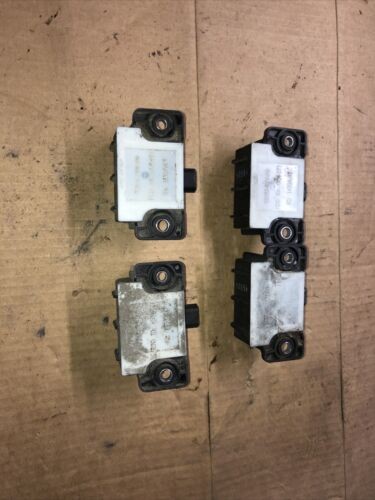Acura TL Tire Pressure Recommended: What You Need to Know
In this article, we will explore the recommended tire pressure for the Acura TL, why it is crucial, and how to check and maintain it. Check the Current Pressure: Use your tire pressure gauge to check the current pressure of each tire. Remember to regularly check and maintain tire pressure to avoid potential issues and ensure a smooth and safe driving experience
Acura TL Tire Pressure Recommended: Ensuring Optimal Performance and Safety
As a responsible car owner, it is essential to maintain your vehicle's tires at the recommended pressure to ensure optimal performance, safety, and longevity. The Acura TL is a reliable and comfortable ride, but it still requires regular maintenance to function at its best. In this article, we will explore the recommended tire pressure for the Acura TL, why it is crucial, and how to check and maintain it.
H2: Why Tire Pressure Matters
Tire pressure is a critical aspect of a vehicle's overall performance and safety. Underinflated tires can lead to a range of issues, including:
- Reduced Fuel Efficiency: Low tire pressure can increase rolling resistance, resulting in decreased fuel efficiency and increased fuel costs.
- Increased Wear and Tear: Underinflated tires are more prone to uneven wear, which can reduce their lifespan and lead to costly replacements.
- Poor Handling: Low tire pressure can cause the vehicle to sway or wobble, making it more difficult to control, especially during sudden maneuvers.
- Safety Risks: Underinflated tires are more susceptible to overheating, which can increase the risk of a blowout, especially during high-speed driving.
H3: Recommended Tire Pressure for the Acura TL
The recommended tire pressure for the Acura TL varies depending on the trim level, driving conditions, and tire type. Here are the recommended tire pressures for different Acura TL models:
- 2015-2021 Acura TLX: 35 PSI (front), 41 PSI (rear)
- 2015-2018 Acura TL SH-AWD: 36 PSI (front), 42 PSI (rear)
- 2019-2021 Acura TLX SH-AWD: 37 PSI (front), 43 PSI (rear)
It is essential to consult your owner's manual or the manufacturer's website for specific tire pressure recommendations for your vehicle. You can also find the recommended tire pressure listed on the tire information placard, located on the driver's side doorjamb or inside the fuel filler door.
H2: How to Check and Maintain Tire Pressure
Checking and maintaining tire pressure is a simple process that can be done at home or at a professional tire shop. Here are some steps to follow:
- Gather Equipment: You will need a tire pressure gauge, which can be purchased at most auto parts stores or gas stations.
- Find the Recommended Pressure: Consult your owner's manual or the manufacturer's website for the recommended tire pressure for your vehicle.
- Check the Current Pressure: Use your tire pressure gauge to check the current pressure of each tire. Compare the reading to the recommended pressure.
- Add Air: If the pressure is low, add air to the tire using a tire pump or at a gas station.
- Repeat the Process: Repeat the process for each tire to ensure they are all at the recommended pressure.
H3: Additional Tips and Considerations
- Check Tire Pressure Regularly: It is recommended to check tire pressure at least once a month, and before long trips.
- Use the Same Pressure: Use the same pressure for the front and rear tires, unless your vehicle has a specific recommendation for different pressures.
- Avoid Overinflation: Overinflation can lead to reduced traction and uneven wear. It is essential to avoid overinflation and maintain the recommended pressure.
- Schedule Regular Tire Inspections: Schedule regular tire inspections with a professional mechanic to identify any potential issues before they become major problems.
In conclusion, maintaining the recommended tire pressure for your Acura TL is crucial for optimal performance, safety, and longevity. By following the steps outlined in this article, you can ensure your tires are properly inflated and your vehicle is running at its best. Remember to regularly check and maintain tire pressure to avoid potential issues and ensure a smooth and safe driving experience.
Acura Tl Tire Pressure Recommended - Welcome in order to my own blog site, with this occasion I am going to show you in relation to Acura Tl Tire Pressure Recommended. And today, here is the first picture.
What about image preceding? will be that will awesome???. if you think so and so, I'l l show you a few impression again beneath :
So, if you would like secure all of these awesome photos related to (Acura Tl Tire Pressure Recommended), just click save button to download the images for your personal pc. There're prepared for transfer, if you like and wish to have it, just click save symbol at the post, and it'll be directly downloaded in your pc. At last in order to have new and the latest image related with (Acura Tl Tire Pressure Recommended), please follow us on google plus or save this page, we try our best to give you regular update with all new and fresh graphics. We do hope you like staying in here. For some up to date and recent news about (Acura Tl Tire Pressure Recommended) images, please kindly follow us on twitter, path, Instagram and google plus, or you mark this page on bookmark section, We try to give you update regularly with all new and fresh pics, enjoy your exploring, and find the right for you.
Thanks for visiting our website, content above (Acura Tl Tire Pressure Recommended) published by precious. Today we're pleased to announce we have found an incredibly interesting content to be reviewed, that is (Acura Tl Tire Pressure Recommended) Many people trying to find details about(Acura Tl Tire Pressure Recommended) and of course one of these is you, is not it?
Sadean Areas


 Sofia Scott
Sofia Scott





















